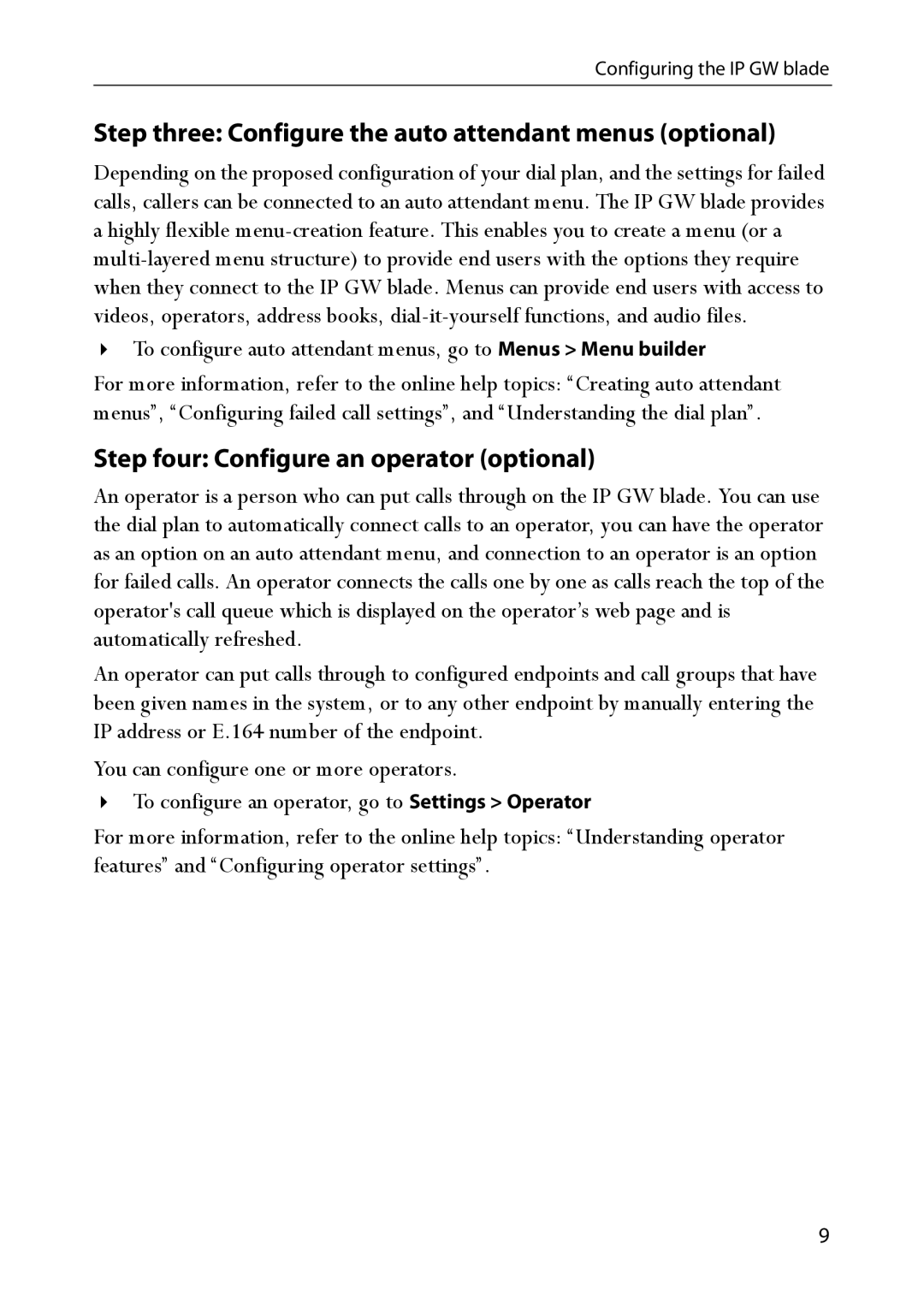Configuring the IP GW blade
Step three: Configure the auto attendant menus (optional)
Depending on the proposed configuration of your dial plan, and the settings for failed calls, callers can be connected to an auto attendant menu. The IP GW blade provides a highly flexible
To configure auto attendant menus, go to Menus > Menu builder
For more information, refer to the online help topics: “Creating auto attendant menus”, “Configuring failed call settings”, and “Understanding the dial plan”.
Step four: Configure an operator (optional)
An operator is a person who can put calls through on the IP GW blade. You can use the dial plan to automatically connect calls to an operator, you can have the operator as an option on an auto attendant menu, and connection to an operator is an option for failed calls. An operator connects the calls one by one as calls reach the top of the operator's call queue which is displayed on the operator’s web page and is automatically refreshed.
An operator can put calls through to configured endpoints and call groups that have been given names in the system, or to any other endpoint by manually entering the IP address or E.164 number of the endpoint.
You can configure one or more operators.
To configure an operator, go to Settings > Operator
For more information, refer to the online help topics: “Understanding operator features” and “Configuring operator settings”.
9
